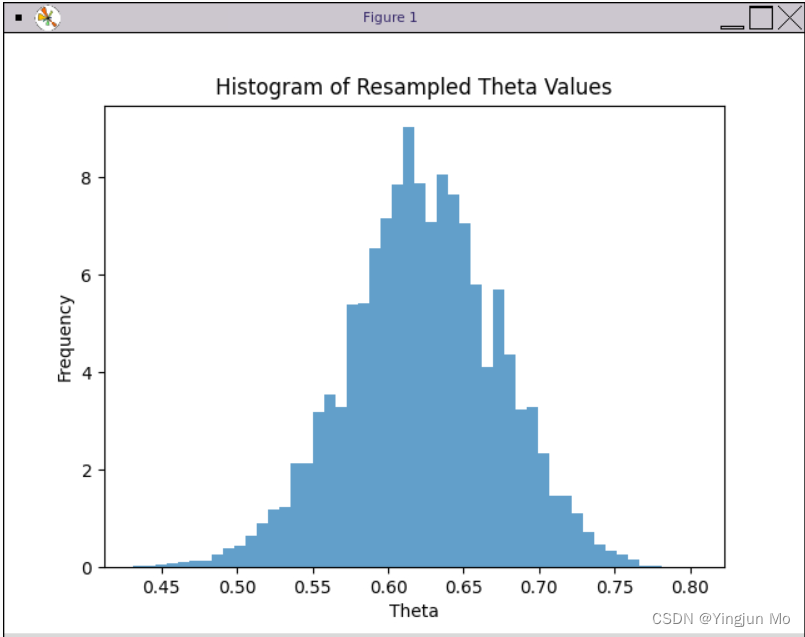-
(三)推断的逼近方法-通过加权重采样的贝叶斯定理
加权重采样
import numpy as np import matplotlib.pyplot as plt # Step 1: Generate 10,000 random theta values from U([0, 1]) n = 10000 theta_values = np.random.rand(n) # Define the function to compute weights for a given theta def compute_weight(theta): return ((2 + theta) ** 125) * ((1 - theta) ** 38) * (theta ** 34) # Compute the weights for all theta values weights = np.array([compute_weight(theta) for theta in theta_values]) # Normalize the weights to make them probabilities weights /= np.sum(weights) # Step 2: Resample theta values based on the computed weights resampled_theta_values = np.random.choice(theta_values, size=n, p=weights) # Plot a histogram of the resampled theta values plt.hist(resampled_theta_values, bins=50, density=True, alpha=0.7) plt.title("Histogram of Resampled Theta Values") plt.xlabel("Theta") plt.ylabel("Frequency") plt.show()- 1
- 2
- 3
- 4
- 5
- 6
- 7
- 8
- 9
- 10
- 11
- 12
- 13
- 14
- 15
- 16
- 17
- 18
- 19
- 20
- 21
- 22
- 23
- 24
- 25
- 26

-
相关阅读:
一文了解蛋白功能结构域预测与分析
如何用 Llama 3 免费本地 AI 分析数据和可视化?
Linux命令汇总
智慧城市怎么实时监测内涝积水的发生及解决办法?
Centos下安装postgreSQL
从基础到进阶,100道测试开发面试题,进大厂涨薪必备
电容笔做的比较好的品牌有哪些?高性价比电容笔测评
Restcloud ETL实践之数据行列转换
劳保鞋批发,你找对地方了吗?
【Linux多线程服务端编程】| 【05】高效的多线程日志
- 原文地址:https://blog.csdn.net/weixin_40614311/article/details/133326101
